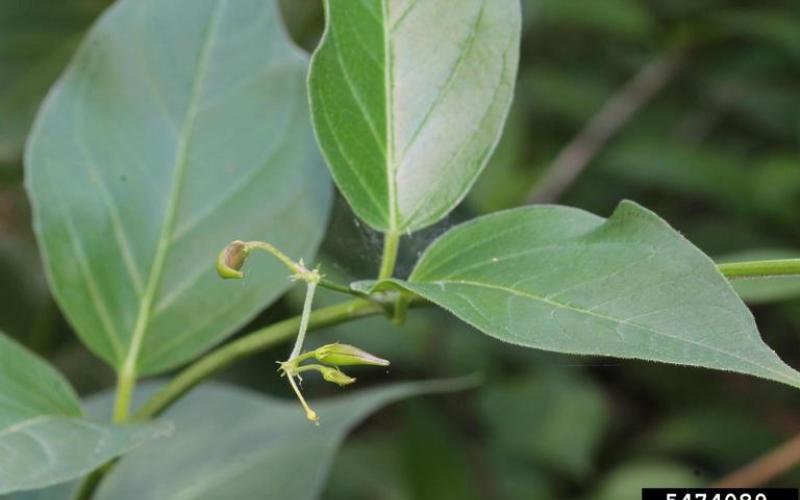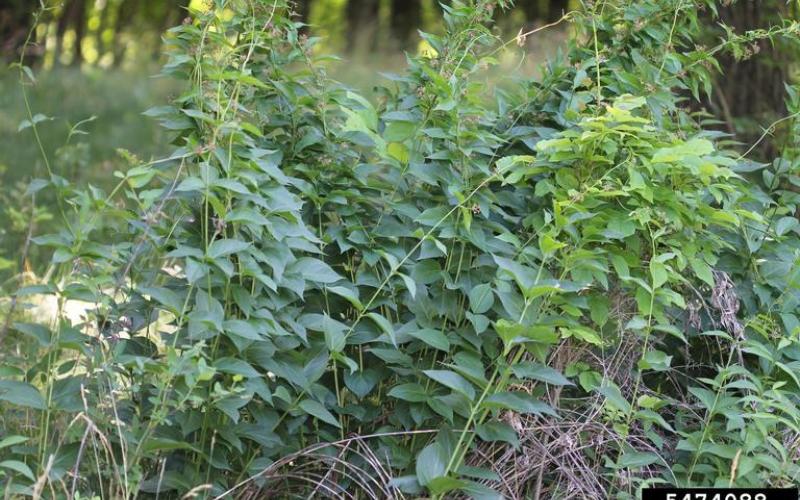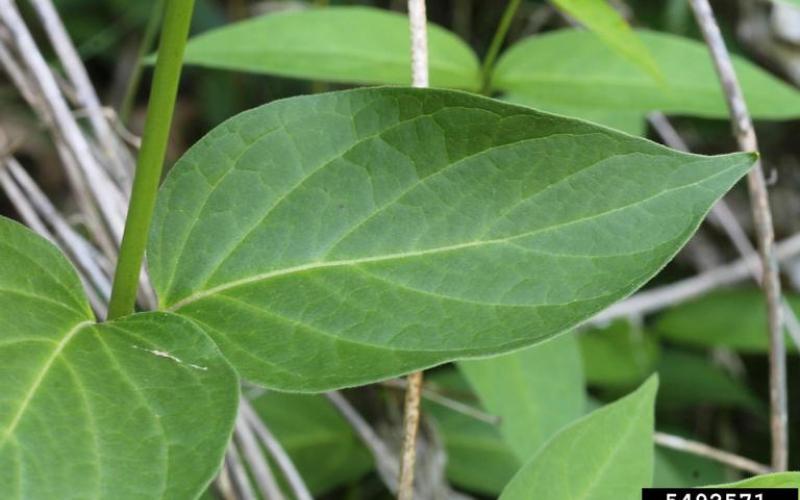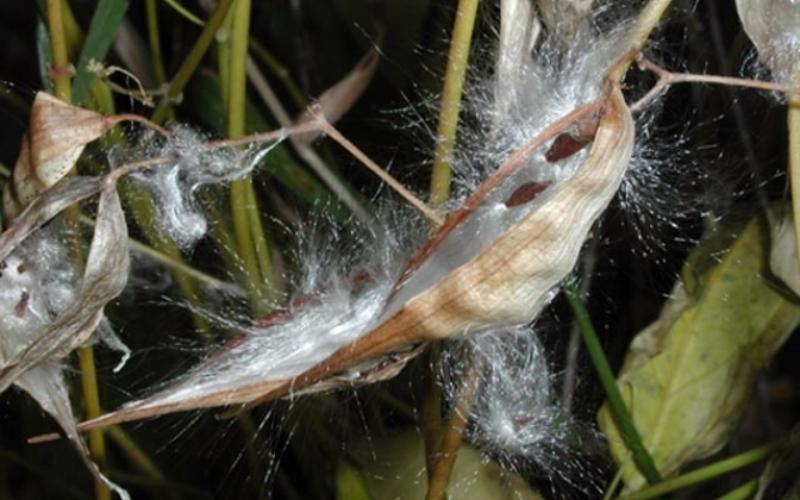Common names: Pale Swallow-wort
Scientific name: Cynanchum rossicum Kleopow
Legal status
All above and below ground parts of the plant must be destroyed. Additionally, no transportation, propagation, or sale of this plant is allowed. Failure to comply may result in an enforcement action by the county or local municipality.
Background
Pale swallow-wort is a vining herbaceous plant in the milkweed family originating from southwest Russia and Ukraine. Pale swallow-wort was introduced in the late 1800’s to the United States as a cultivated plant. Since then, the plant has been found growing in all the eastern United States, in the mid-west, southern Ontario, and Quebec in Canada. In 2020, two populations were discovered in Scott County. Both populations are documented to be reproducing and spreading into adjacent areas.
Description
- Pale swallow-wort is an herbaceous, twining perennial vine growing up to 7 feet in length.
- Leaves are oval to heart-shaped with a pointed tip, shiny, and medium green to yellow.
- The pale pink to reddish brown flowers are small and star-shaped with five petals. Flowers grow in clusters of 6-10 blooms.
- Fruit is typical milkweed-like pods and full of flat brown seeds, covered in fine white hairs.
- Unlike black swallow-wort, pale swallow-wort plants have no rhizomes and grow in clumps with many stems.
Habitat
Pale swallow-wort is an herbaceous vine that is tolerant of shade, sun, and a variety of soil conditions. It is generally found in disturbed areas including old fields, woodlands, and brushy areas.
Means of spread and distribution
Pale swallow-wort seed can be spread by wind, which results in long-range dispersal. It can also spread by mowing or soil tillage that breaks up root pieces and moves them to new locations.
Impact
Pale swallow-wort can form dense and extensive patches that suppress native vegetation. This disrupts local ecosystems by reducing species diversity and wildlife habitat. Infestations can eventually cover several acres of land and the tangled vines form impenetrable thickets. Often, the vines are not noticed until they are well-established and difficult to control.
There is concern that pale swallow-wort has a negative impact on monarch butterflies as the plant is toxic to many insect larvae. Since pale swallow-wort is in the milkweed family, female monarchs will lay their eggs on pale swallow-wort, but they have a strong preference for common milkweed. However, pale swallow-wort can displace common milkweed and reduce habitat for monarchs.
Prevention and management
- Do not plant pale swallow-wort.
- The whole pale swallow-wort plant, including roots, can be dug up or pulled once or twice per season.
- Mowing is not recommended as it can spread seeds.
- Plants can also be controlled with either foliar or cut-stem herbicide applications. For specific herbicide recommendations, contact your University of Minnesota Regional Extension Educator.
Toxicity
Pale swallow-wort is suspected to be toxic to mammals, including livestock.





